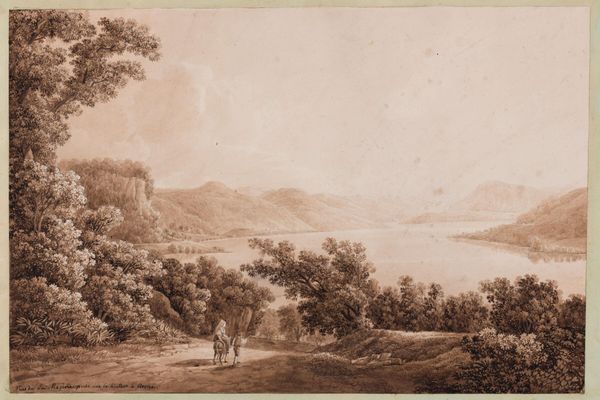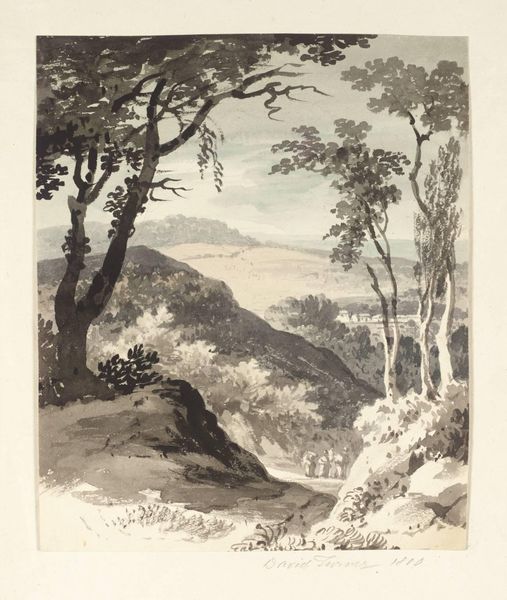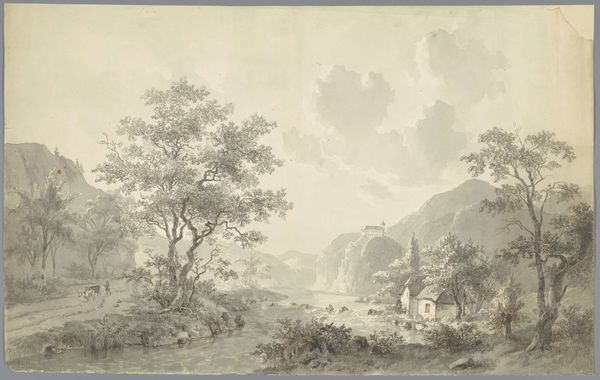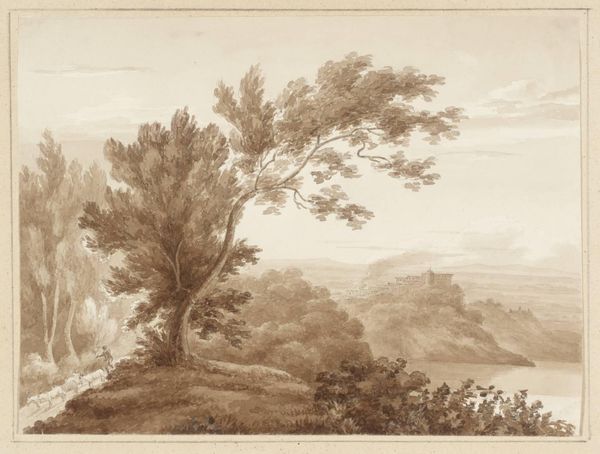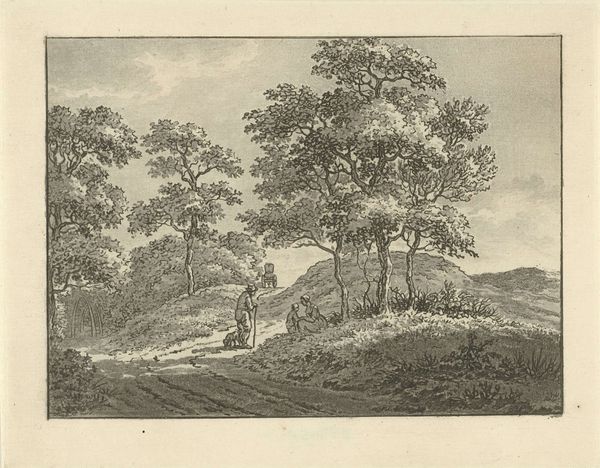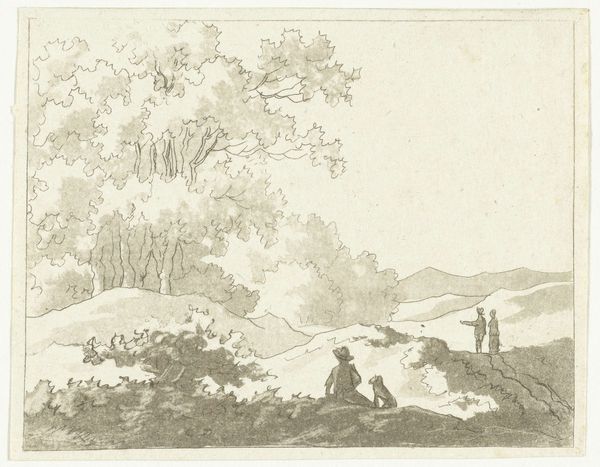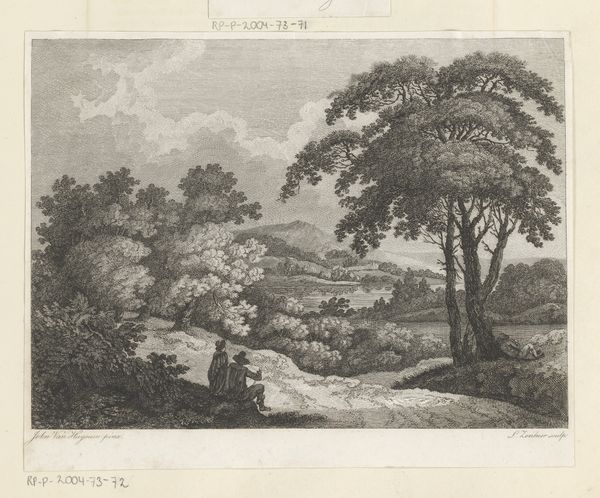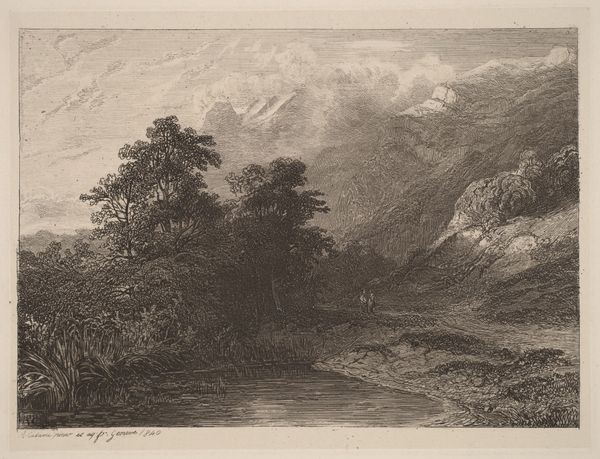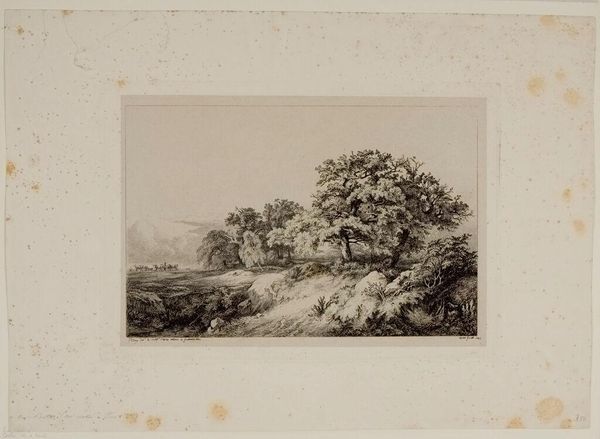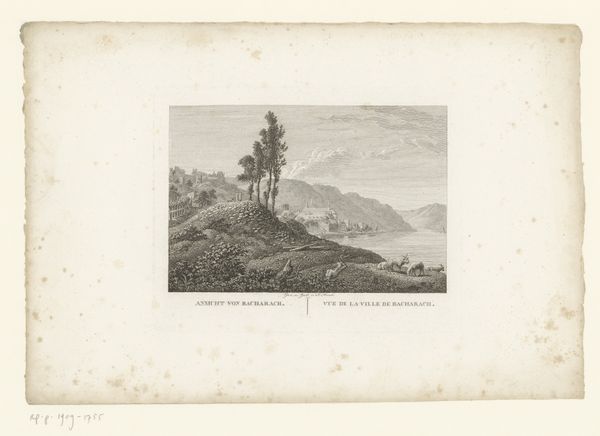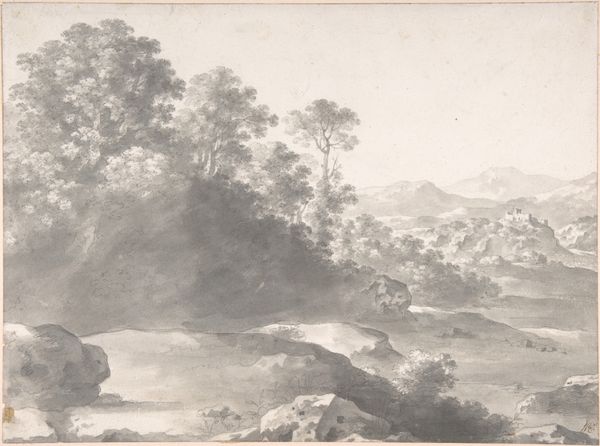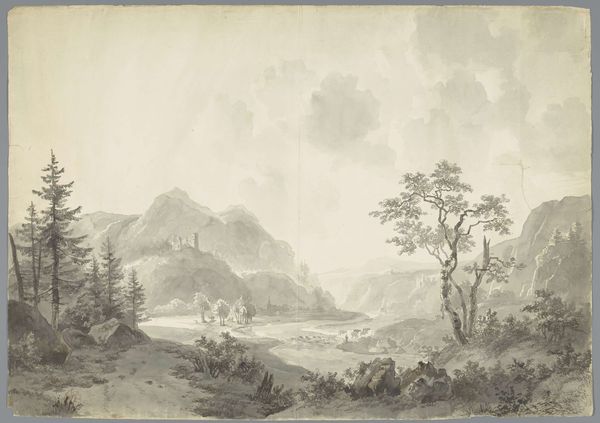
Landschap met begroeide heuvels en trekkende reizigers 1740 - 1771
0:00
0:00
Dimensions: height 274 mm, width 361 mm
Copyright: Rijks Museum: Open Domain
Curator: At first glance, the softness and overall delicate nature of this pencil drawing create an aura of introspection. Editor: And it’s a subtlety that belies its potential, I think. Let me introduce this drawing to you. It’s entitled "Landschap met begroeide heuvels en trekkende reizigers," or "Landscape with overgrown hills and traveling figures," created by Franz Edmund Weirotter between 1740 and 1771. We’re fortunate enough to have it here at the Rijksmuseum. Curator: The travelers, positioned lower-right, look like just another feature within this serene landscape. Perhaps they represent our own personal journey within the larger theater of the world? Or their role is mostly compositional? Editor: I would lean towards the compositional consideration. Weirotter, especially in his drawings and etchings, demonstrates a dedication to idealized and, to some extent, picturesque arrangements of the natural world, and how they were appreciated by polite society during the rise of tourism and exploration. The human presence enhances the romance of it all. Curator: That romantic sensibility certainly comes through. I find that the varied line work used to depict the landscape creates texture that invites exploration, leading my eye deeper and deeper into the scene. Those light touches on the distant hills give such depth! Editor: Absolutely, and those delicate lines allowed for mass production via etchings – enabling broader distribution of Weirotter’s vision of ideal landscapes and cultivating very particular notions of seeing. Consider how these kinds of images contributed to a shared understanding and appreciation, even a desire for such "natural" experiences during this period. Curator: Interesting. So this drawing isn’t just a depiction of a landscape, but a cultural artifact that shaped how people understood the landscape itself. The symbol has shaped reality. Editor: Precisely. What started as personal appreciation eventually influenced the culture, prompting both access to new environments and shaping perceptions and cultural meanings of “nature”. It makes you think about how landscapes carry multiple layers of meaning and function across time and place, doesn’t it? Curator: It does, and perhaps it shows the inherent tension between our individual experience and collective identity that only unfolds in the shared world. Thank you. Editor: Thank you, it’s been enlightening to explore its public dimensions.
Comments
No comments
Be the first to comment and join the conversation on the ultimate creative platform.
